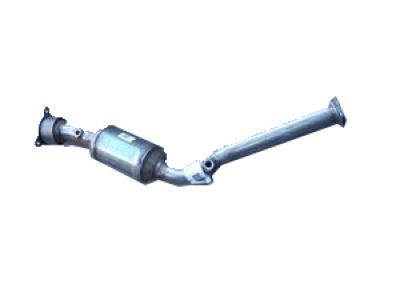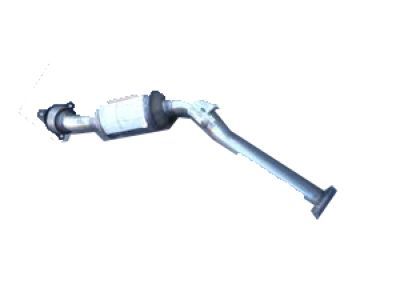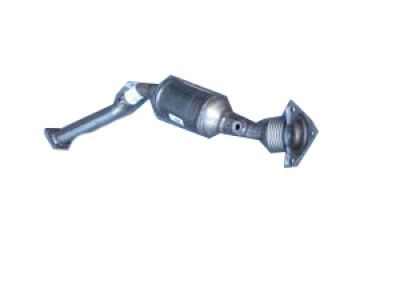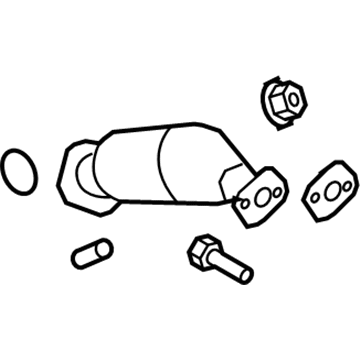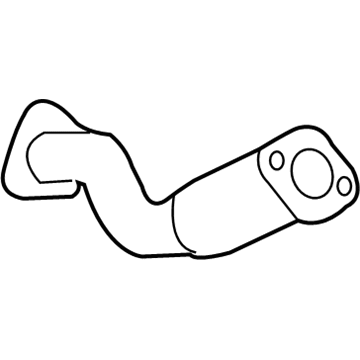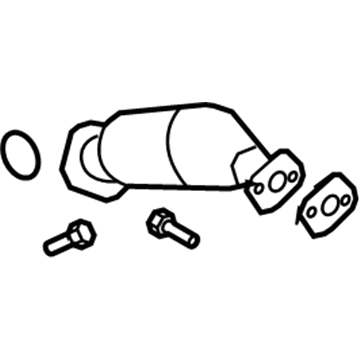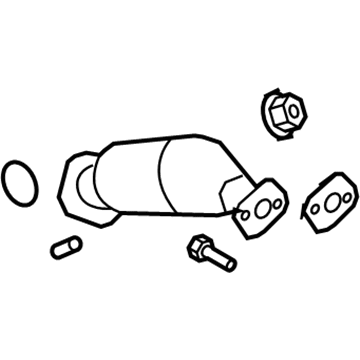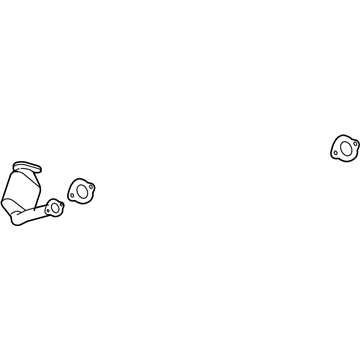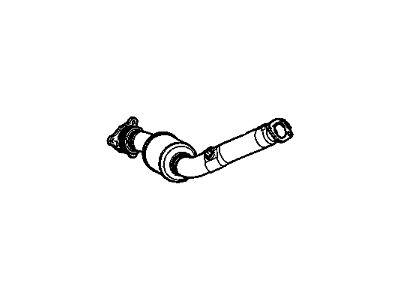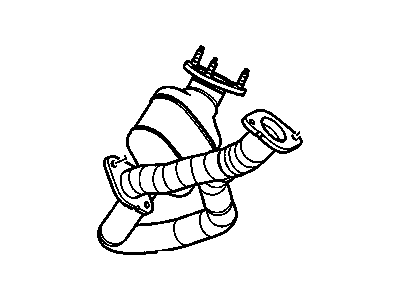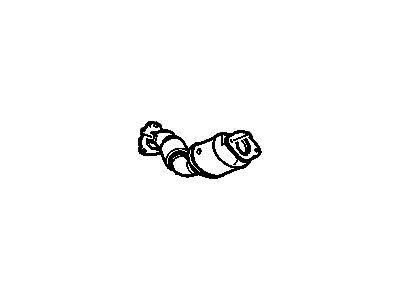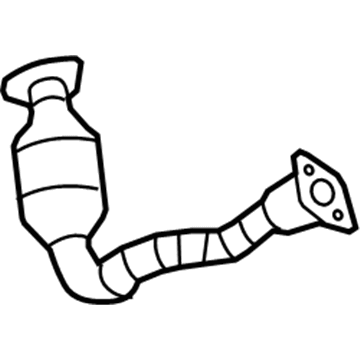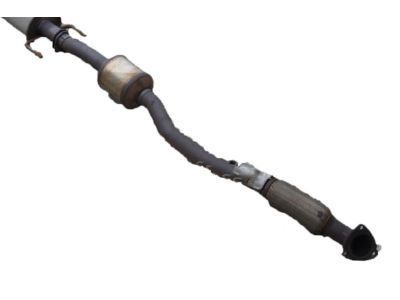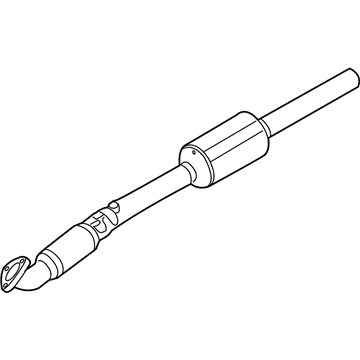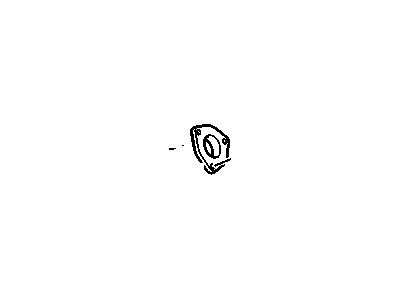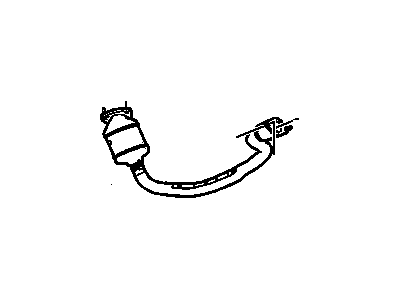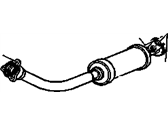
My Garage
My Account
Cart
Genuine Saturn Catalytic Converter
Cat. Converter- Select Vehicle by Model
- Select Vehicle by VIN
Select Vehicle by Model
orMake
Model
Year
Select Vehicle by VIN
For the most accurate results, select vehicle by your VIN (Vehicle Identification Number).
54 Catalytic Converters found
Saturn 3Way Catalytic Convertor Assembly (W/Exhaust Manifold Pip)
Part Number: 22970504$1480.02 MSRP: $2219.63You Save: $739.61 (34%)Ships in 1-3 Business DaysProduct Specifications- Other Name: Converter Assembly, 3Way Catalytic (W/Exhaust Manifold Pip); Catalytic Converter, Converter & Pipe
- Replaces: 15247469, 22703213, 15873731
Saturn CONVERTER ASM,3WAY CTLTC (W/EXH MANIF PIPE)"KIT" SEE G
Part Number: 19418920$1146.84 MSRP: $1717.10You Save: $570.26 (34%)Ships in 1-3 Business DaysProduct Specifications- Other Name: Catalytic Converter, Converter & Pipe
- Replaces: 15903506
Saturn 3-Way Catalytic Convertor Assembly (W/ Exhaust Manifold Pipe)
Part Number: 15842643$661.81 MSRP: $1241.05You Save: $579.24 (47%)Product Specifications- Other Name: Converter Asm,3Way Catalytic (W/ Exhaust Manifold Pipe); Converter & Pipe
Saturn CONVERTER ASM,3WAY CTLTC (W/EXH MANIF PIPE) "KIT"
Part Number: 19418970$1082.11 MSRP: $2074.80You Save: $992.69 (48%)Ships in 1-3 Business DaysProduct Specifications- Other Name: Catalytic Converter, Converter & Pipe
- Replaces: 25937659, 20847946
Saturn CONVERTER ASM,3WAY CTLTC (W/EXH MANIF PIPE) "KIT"
Part Number: 19420111$1128.55 MSRP: $1689.52You Save: $560.97 (34%)Ships in 1-3 Business DaysProduct Specifications- Other Name: Catalytic Converter, Converter & Pipe
- Replaces: 25776079
Saturn Exhaust Manifold Pipe Assembly
Part Number: 21013162$1262.40 MSRP: $2033.72You Save: $771.32 (38%)Ships in 1-2 Business DaysProduct Specifications- Other Name: Pipe Asm,Exhaust Manifold; Converter & Pipe, Front Pipe
Saturn CONVERTER ASM,3WAY CTLTC (W/EXH MANIF PIPE) "KIT"
Part Number: 19419591$1119.25 MSRP: $1675.49You Save: $556.24 (34%)Ships in 1-3 Business DaysProduct Specifications- Other Name: Catalytic Converter, Converter & Pipe
- Replaces: 15118654
Saturn 3Way Catalytic Convertor (W/Exhaust Rear Manifold Pipe)
Part Number: 96817483$1077.13 MSRP: $1611.98You Save: $534.85 (34%)Ships in 1-3 Business DaysProduct Specifications- Other Name: Converter,3Way Catalytic (W/Exhaust Rear Manifold Pipe); Catalytic Converter, Converter & Pipe
- Position: Rear
Saturn 3Way Catalytic Convertor Assembly (W/ Exhaust Manifold P)
Part Number: 20889270$986.04 MSRP: $1474.57You Save: $488.53 (34%)Ships in 1-3 Business DaysProduct Specifications- Other Name: Converter Assembly, 3Way Catalytic (W/ Exhaust Manifold P); Converter & Pipe
- Replaces: 15873413
Saturn 3Way Catalytic Convertor Assembly (W/ Exhaust Manifold P)
Part Number: 20889269$1447.58 MSRP: $1977.57You Save: $529.99 (27%)Ships in 1-2 Business DaysProduct Specifications- Other Name: Converter Assembly, 3Way Catalytic (W/ Exhaust Manifold P); Catalytic Converter, Converter & Pipe
- Replaces: 15147065
Saturn 3-Way Catalytic Convertor (W/ Exhaust Rear Manifold Pipe)
Part Number: 10379411$849.34 MSRP: $1268.39You Save: $419.05 (34%)Ships in 1-3 Business DaysProduct Specifications- Other Name: Converter Asm 3Way Catalytic (W/ Exhaust Rear Mani ; Converter, Catalytic Converter); Catalytic Converter, Converter & Pipe
- Position: Rear
Saturn 3-Way Catalytic Convertor (W/ Exhaust Rear Manifold Pipe)
Part Number: 15780520$867.94 MSRP: $1296.43You Save: $428.49 (34%)Ships in 1-3 Business DaysProduct Specifications- Other Name: Converter Asm 3Way Catalytic (W/ Exhaust Rear Mani ; Converter, Catalytic Converter); Catalytic Converter, Converter & Pipe
- Position: Rear
Saturn CONVERTER ASM,3WAY CTLTC (W/EXH MANIF PIPE)"KIT"
Part Number: 19418923$1204.57 MSRP: $1804.18You Save: $599.61 (34%)Ships in 1-3 Business DaysProduct Specifications- Other Name: Catalytic Converter, Converter & Pipe
- Replaces: 15903507
Saturn 3Way Catalytic Convertor Assembly (W/Exhaust Manifold Pip)
Part Number: 22970503$1207.23 MSRP: $1808.19You Save: $600.96 (34%)Ships in 1-3 Business DaysProduct Specifications- Other Name: Converter Assembly, 3Way Catalytic (W/Exhaust Manifold Pip); Catalytic Converter, Converter & Pipe
- Replaces: 15806266, 25832163
Saturn 3Way Catalytic Convertor Assembly (W/Exhaust Manifold Pip)
Part Number: 22970502$888.89 MSRP: $1328.03You Save: $439.14 (34%)Ships in 1-3 Business DaysProduct Specifications- Other Name: Converter Assembly, 3Way Catalytic (W/Exhaust Manifold Pip); Catalytic Converter, Converter & Pipe
- Replaces: 15806265, 25832162
Saturn CONVERTER ASM,3WAY CTLTC(W/EXH RR MANIF PIPE) "KIT"
Part Number: 19418971$861.75 MSRP: $1287.10You Save: $425.35 (34%)Ships in 1-3 Business DaysProduct Specifications- Other Name: Catalytic Converter, Converter & Pipe
- Position: Rear
- Replaces: 15943289
- Product Specifications
- Other Name: Pipe,Exhaust Front; Front Pipe, Intermediate Pipe
- Position: Front
Saturn Catalytic Convertor (W/Exhaust Manifold Pipe)
Part Number: 25962725$989.35 MSRP: $1479.57You Save: $490.22 (34%)Product Specifications- Other Name: Converter,Catalytic (W/Exhaust Manifold Pipe); Catalytic Converter, Converter & Pipe
Saturn 3Way Catalytic Convertor Assembly (W/Exhaust Manifold Pip)
Part Number: 22970500$1014.34 MSRP: $1517.25You Save: $502.91 (34%)Product Specifications- Other Name: Converter Assembly, 3Way Catalytic (W/Exhaust Manifold Pip); Catalytic Converter, Converter & Pipe
- Replaces: 22695582, 15247471
Saturn 3Way Catalytic Convertor Assembly (W/ Exhaust Front Man)
Part Number: 15943288$1022.10 MSRP: $1528.97You Save: $506.87 (34%)Product Specifications- Other Name: Converter Assembly, 3Way Catalytic (W/ Exhaust Front Man); Catalytic Converter, Converter & Pipe
- Position: Front
| Page 1 of 3 |Next >
1-20 of 54 Results
Saturn Catalytic Converter
In need of new Saturn Catalytic Converters? We suggest you explore our vast collection of genuine Saturn Catalytic Converters, all available at competitive prices. Furthermore, every OEM part we provide is backed by a manufacturer's warranty and comes with the promise of swift delivery and a hassle-free return policy.
Saturn Catalytic Converter Parts Questions & Experts Answers
- Q: What should you consider before replacing a catalytic converter on Saturn Vue?A:Because of a Federally mandated extended warranty covering emissions-related components like the catalytic converter, it is advisable to check with a dealer service department before replacing the converter at your own expense. A catalytic converter is an emission control device in the exhaust system that reduces certain pollutants in the exhaust gas stream, with two types: oxidation converters and reduction converters. Oxidation converters contain a ceramic honeycomb substrate coated with platinum and palladium, reducing unburned hydrocarbons and carbon monoxide by adding oxygen to the exhaust stream, converting them to water vapor and carbon dioxide. Reduction converters, coated with platinum and rhodium, reduce oxides of nitrogen by removing oxygen, producing nitrogen and carbon dioxide. Catalytic converters that combine both types are known as three-way catalysts, capable of reducing all three pollutants. The test equipment for diagnosing a malfunctioning catalytic converter is expensive, so it is recommended to take the vehicle to a dealer or authorized emission inspection facility. When servicing underbody components, inspect the converter for leaks, corrosion, dents, and other damage, particularly at the welds and flange bolts. Although catalytic converters rarely break, they can become restricted; checking for a restricted converter can be done using a vacuum gauge connected to an intake manifold vacuum source. After warming the engine and noting the vacuum reading at idle, quickly open and close the throttle, recording the readings. If the fourth reading is more than one in-Hg lower than the idle reading, the exhaust system might be restricted. Many exhaust specialist shops can replace catalytic converters at a lower cost than a dealer. To replace a catalytic converter, raise the vehicle securely on jackstands, disconnect the electrical connector from the oxygen sensor, support the exhaust system as necessary, remove the retaining nuts from the catalyst mounting flanges, take off the catalyst and gaskets, and then install the new catalyst in reverse order, ensuring to replace any rusted or damaged fasteners and gaskets.
Related Saturn Parts
Browse by Model
Astra Catalytic Converter Aura Catalytic Converter Ion Catalytic Converter L100 Catalytic Converter L200 Catalytic Converter L300 Catalytic Converter LS Catalytic Converter LS1 Catalytic Converter LS2 Catalytic Converter LW2 Catalytic Converter LW200 Catalytic Converter LW300 Catalytic Converter Outlook Catalytic Converter Relay Catalytic Converter SC1 Catalytic Converter SC2 Catalytic Converter SL Catalytic Converter SL1 Catalytic Converter SL2 Catalytic Converter SW1 Catalytic Converter SW2 Catalytic Converter Sky Catalytic Converter Vue Catalytic Converter
